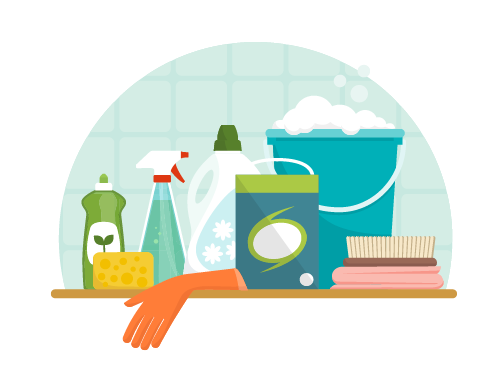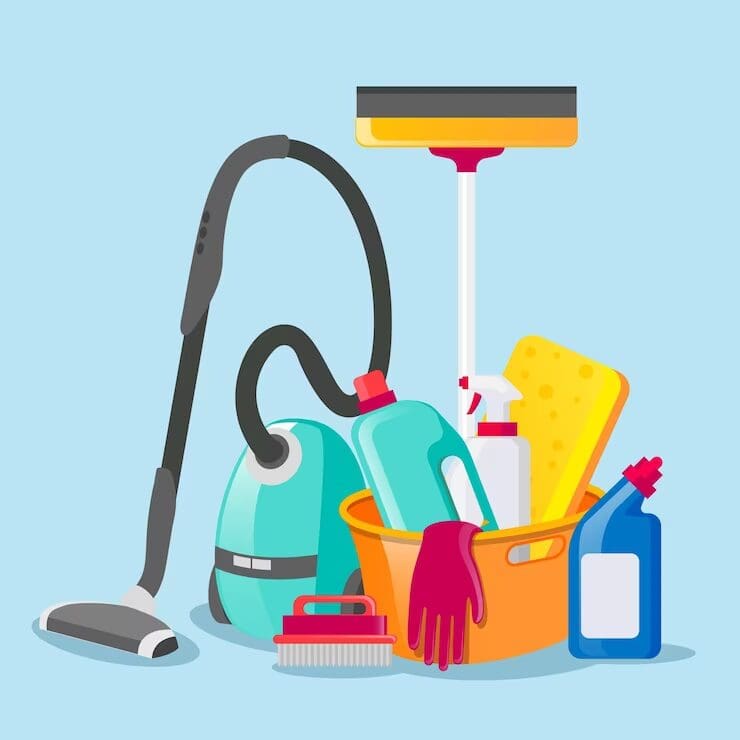Achieve a Cleaner Home with These Everyday Cleaning Tips: Defrosted and Cleaned Every Few Months and Much more
Achieve a Cleaner Home with These Everyday Cleaning Tips: Defrosted and Cleaned Every Few Months and Much more
Blog Article
Recognizing the Need for Completely Disinfecting and Disinfecting Often Touched Surface Areas in High-Traffic Areas
In the world of public health and safety, the thorough sanitation and sanitization of frequently touched surface areas in high-traffic areas stand as extremely important actions in preventing the spread of damaging virus. The importance of this practice extends much past mere tidiness, diving right into the realm of condition prevention and area wellness. By checking out the different aspects of surface area sanitation, from the threats related to overlooking cleaning procedures to the effective approaches that can be utilized, a clearer understanding arises of the vital duty these practices play in securing public wellness. As we navigate this conversation, it ends up being apparent that the ramifications of thorough surface disinfection resound not only within the boundaries of a specific atmosphere yet additionally reverberate on a more comprehensive range, impacting the health and security of individuals throughout varied common setups.
Significance of Surface Disinfection
Highlighting the detailed disinfection of high-traffic surface areas is critical in keeping a hygienic setting and stopping the spread of damaging pathogens. High-touch surface areas such as door handles, light switches, lift switches, and countertops function as reproducing grounds for viruses and germs. Routine sanitation of these surfaces is imperative to minimize the risk of contamination and transmission of illnesses.
By executing a robust sanitation procedure, businesses and institutions can produce a more secure setting for staff members, visitors, and customers. Appropriate surface area disinfection not just reduces the spread of contagious illness but likewise imparts confidence in the tidiness and security of the facilities. This aggressive method shows a dedication to health and wellness and wellness, which is particularly vital in high-traffic areas where the chance of direct exposure to microorganisms is increased.
In addition, surface sanitation plays a crucial function in total infection control approaches. Integrated with hand health methods, using masks, and keeping physical distancing, complete disinfection of high-touch surface areas creates an extensive protection against the transmission of hazardous microbes. Focusing on surface area disinfection is an essential element of an all natural strategy to health and wellness in shared spaces.
Risks of Overlooking Cleaning Practices
Disregarding detailed sanitation of high-traffic surfaces substantially heightens the danger of bacterial and viral contamination, presenting a significant risk to the health and security of people frequenting these rooms. Failure to carry out correct cleansing practices can cause the accumulation and spread of dangerous pathogens, consisting of microorganisms and viruses, on often touched surfaces such as doorknobs, handrails, lift buttons, and countertops.

Furthermore, ignoring the relevance of thorough cleaning not just jeopardizes the wellness of people however additionally undermines initiatives to maintain a hygienic and tidy environment. It is important to recognize the relevance of correct sanitation protocols in stopping the spread of infections and safeguarding public health and wellness.
Efficient Disinfection Methods
To preserve optimal sanitation and reduce the threat of contamination on high-traffic surfaces, using efficient sanitation methods is important. One of the most effective and typical disinfection methods is making use of chemical anti-bacterials. These items can differ in toughness and make-up, with some targeting certain virus like viruses or microorganisms. It is essential to comply with the producer's instructions for correct dilution, get in touch with time, and ventilation when utilizing chemical disinfectants to ensure their effectiveness - Scrub the Surfaces.
An additional effective technique is making use of UV-C light. UV-C light has been shown to be reliable in killing a broad variety of bacteria by disrupting their DNA framework, hence avoiding them from replicating. However, it is essential to use UV-C go to website light appropriately, ensuring that the appropriate strength and direct exposure time are put on attain the desired disinfection my review here outcomes.
Furthermore, employing vapor cleansing as a sanitation method can be extremely reliable, especially on surface areas that are heat-resistant. Steam can pass through permeable surface areas and eliminate germs, viruses, and various other pathogens efficiently. When using heavy steam cleansing, it is necessary to make certain that the surface reaches the needed temperature for an enough quantity of time to assure correct disinfection.
Effect On Public Health
The maintenance of high criteria of tidiness and sanitation on high-traffic surface areas plays an important duty in protecting public health and wellness. Regularly touched surfaces in locations with high footfall, such as doorknobs, handrails, elevator buttons, and washroom facilities, offer as reproducing grounds for dangerous virus.
Effective sanitation methods not only secure people from dropping unwell but additionally add to the general health of society. Public health authorities emphasize the significance of maintaining tidy atmospheres to avoid break outs and have the spread of diseases. In high-traffic areas like flight terminals, colleges, healthcare facilities, and mass transit systems, the influence of rigorous disinfection actions can not be downplayed. Prioritizing the sanitization of frequently touched surfaces is an aggressive approach to advertising public wellness and improving the safety and security of people in common rooms.
Carrying Out Normal Cleaning Up Protocols
Immediately instituting and adhering to a regular timetable of cleansing methods is critical for preserving the tidiness and safety of high-traffic surfaces. Normal cleaning methods are important in protecting against the accumulation of bacteria and virus on regularly touched surfaces, particularly in areas with high foot web traffic. By carrying out an organized approach to cleansing, organizations can successfully reduce the threat of illness transmission and produce a much healthier environment for staff members, clients, and the public.
To establish an efficient cleansing schedule, it is critical to recognize high-traffic areas that call for constant interest. These locations may consist of look at this now doorknobs, handrails, lift switches, restroom centers, and common devices. Executing a regular cleaning program that targets these surface areas multiple times a day can significantly lower the spread of harmful microorganisms and infections.
In addition, making use of proper cleaning representatives and disinfectants is crucial to ensuring that surfaces are thoroughly sanitized. Routine training of cleaning up staff on correct cleansing techniques and the value of adherence to the cleansing timetable is likewise vital in keeping a sanitary setting. By focusing on constant cleansing protocols, companies can advertise the wellness and wellness of people who communicate with these high-traffic surface areas.

Final Thought
To conclude, it is vital to focus on comprehensive sanitation and sanitization of frequently touched surface areas in high-traffic areas to avoid the spread of hazardous virus and keep public health. Overlooking correct cleansing practices can increase the risk of contamination and transmission of diseases. By implementing routine cleansing methods and using efficient disinfection techniques, we can develop a more secure atmosphere for every person (Everyday cleaning). It is important to acknowledge the value of keeping tidy surfaces in high-traffic locations to make sure the health of the area.
In the realm of public health and wellness and safety and security, the meticulous disinfection and sanitization of frequently touched surface areas in high-traffic areas stand as extremely important procedures in stopping the spread of harmful microorganisms. By checking out the various aspects of surface disinfection, from the risks associated with ignoring cleansing procedures to the effective methods that can be used, a clearer understanding arises of the crucial function these techniques play in securing public wellness.In addition, using vapor cleaning as a disinfection technique can be extremely reliable, specifically on surface areas that are heat-resistant. When utilizing heavy steam cleaning, it is essential to ensure that the surface area reaches the called for temperature level for an adequate quantity of time to assure proper disinfection.
In final thought, it is critical to prioritize detailed disinfection and sanitization of regularly touched surfaces in high-traffic areas to avoid the spread of dangerous microorganisms and maintain public health.
Report this page